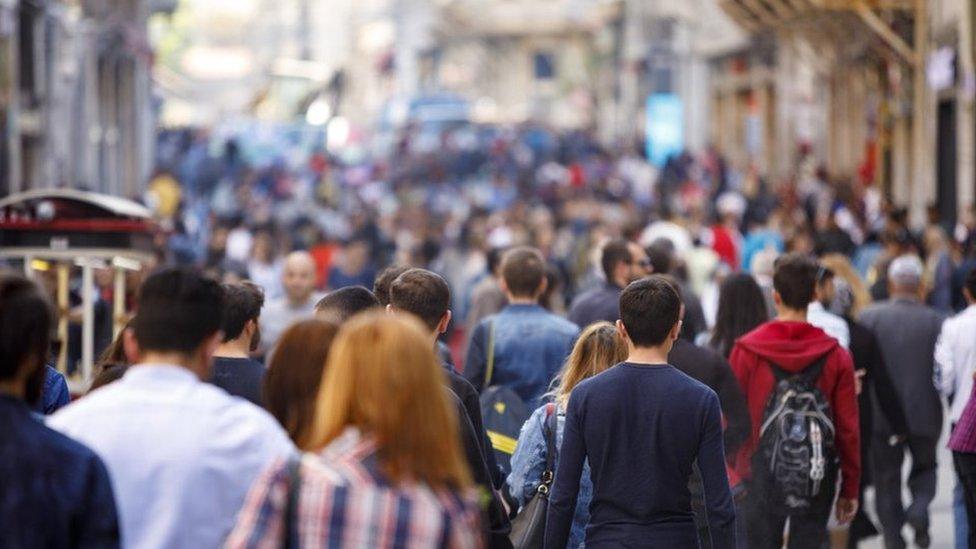Covid infections in UK continue to fall
- Published

The number of people infected with coronavirus in the UK is continuing to fall,
Its latest data estimates 1.7 million people - about one in 40 of us - would have tested positive two weeks ago.
That is down significantly from 3.5 million in early July and school holidays may be part of the reason.
The number of people dying with Covid or being admitted to hospital with the virus is also falling.
The ONS infection survey tests a random bunch of homes to track the virus, so their figures are not affected by the fact most of us are not testing any more.
Its analysis shows the virus is on the slide in nearly all age groups and corners of the UK. Only in north-east England and in older teenagers/young adults are there signs the fall may have levelled off.
The cases are nearly all one of the newer forms of the Omicron variant known as BA.4 and BA.5 - together they make up 19 out of every 20 cases.
The fall in infections will be widely welcomed, however, attention is already turning to this winter and how the NHS will cope if there is a surge in Covid alongside other infections such as flu.
The UK has just become the first country to approve a dual-strain Covid vaccine which will be rolled out next month.
Sarah Crofts, head of analytical outputs for the ONS's Covid-19 infection survey, said: "Infections have continued to fall across much of the UK to levels last seen in mid-June.
"Our latest data show these decreases are among nearly all ages in England with the lowest levels seen among children.
"We will continue to monitor the data closely to understand the impact of the summer holidays."
Across the UK, the ONS estimates Covid rates were:
One in 40 in England - down from one in 25 at the end of July
One in 40 in Wales - down from one in 30 at the end of July
One in 50 in Northern Ireland - down from one in 17 at the end of July
One in 30 in Scotland - down from one in 20 at the end of July
Follow James